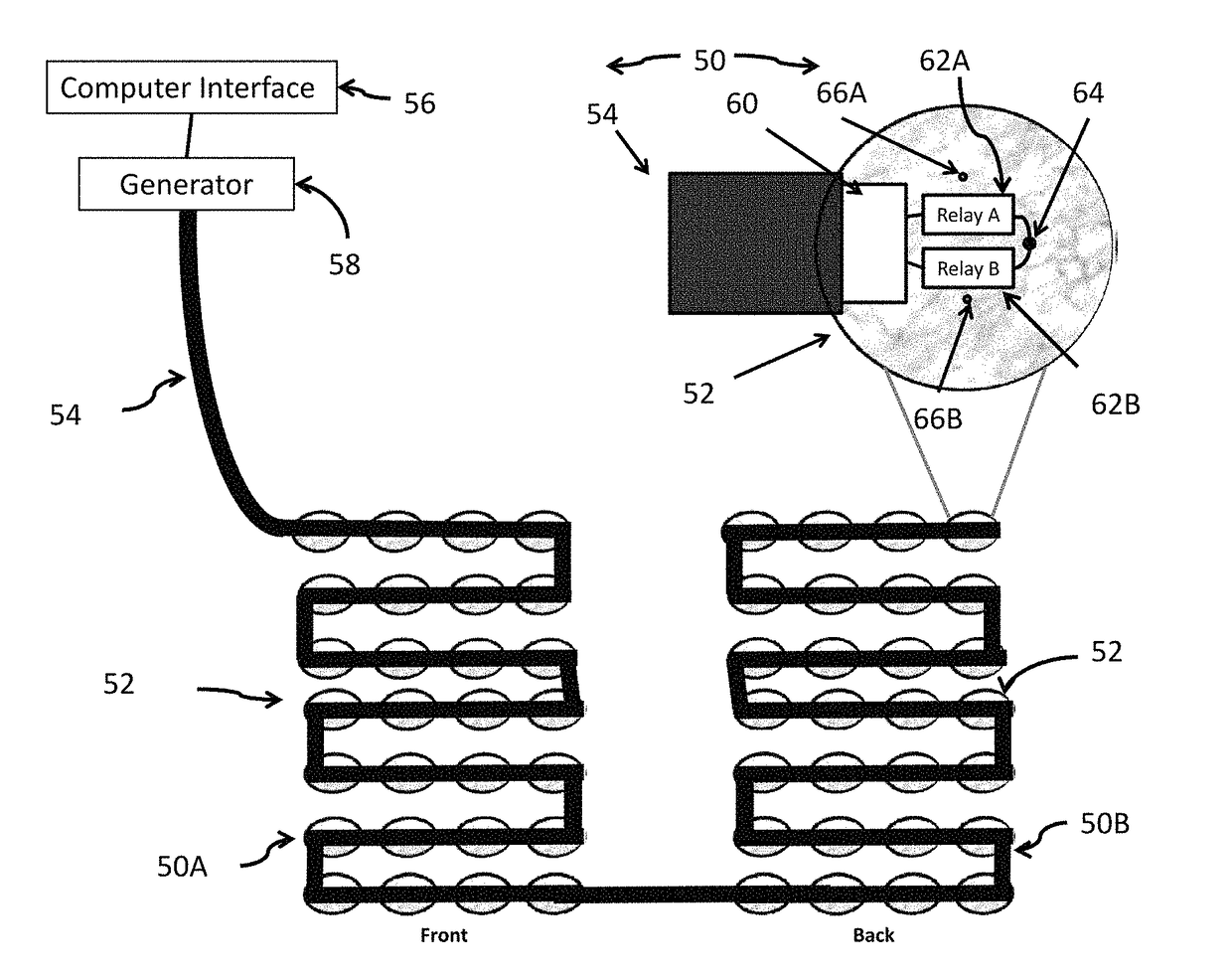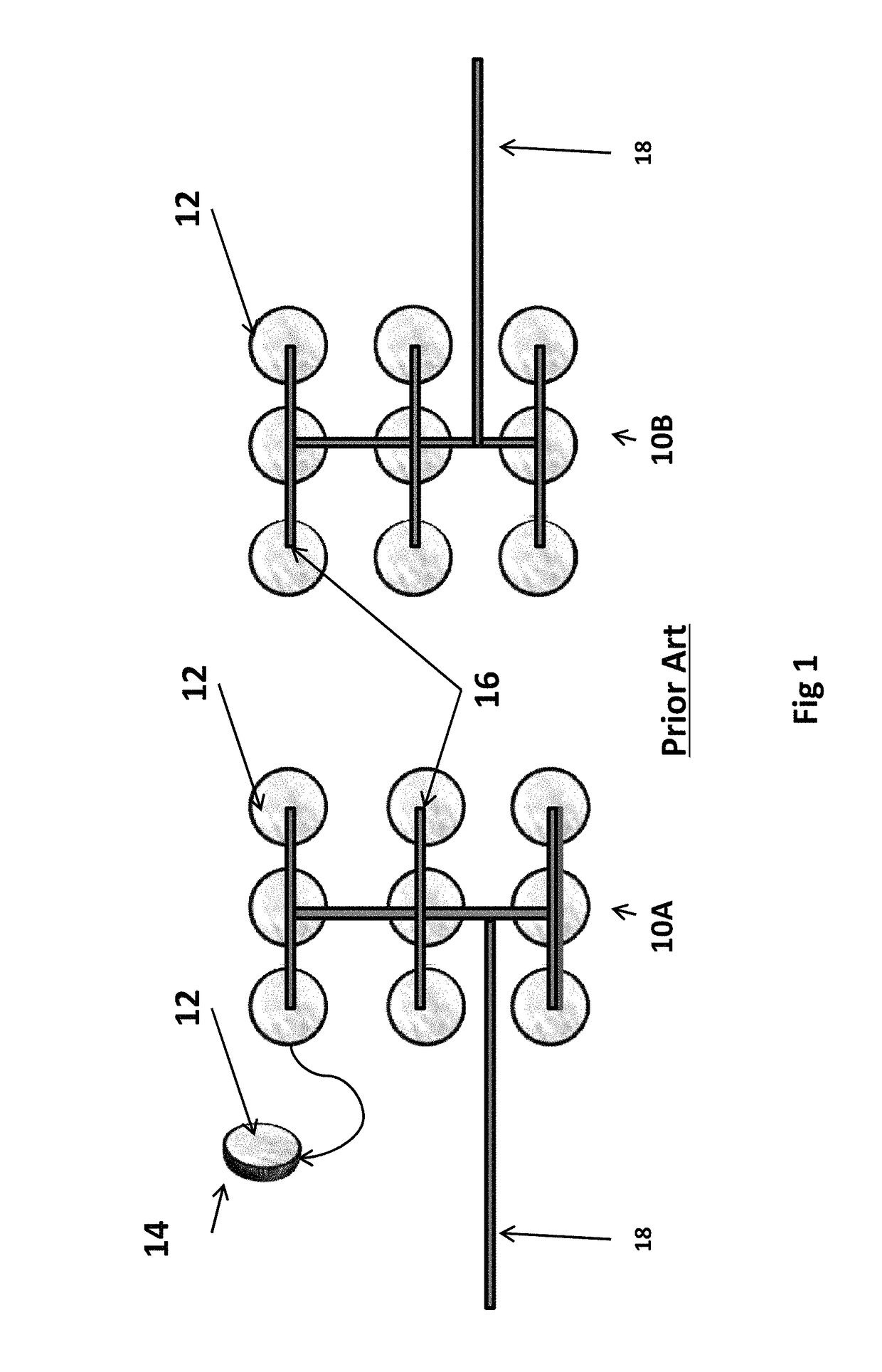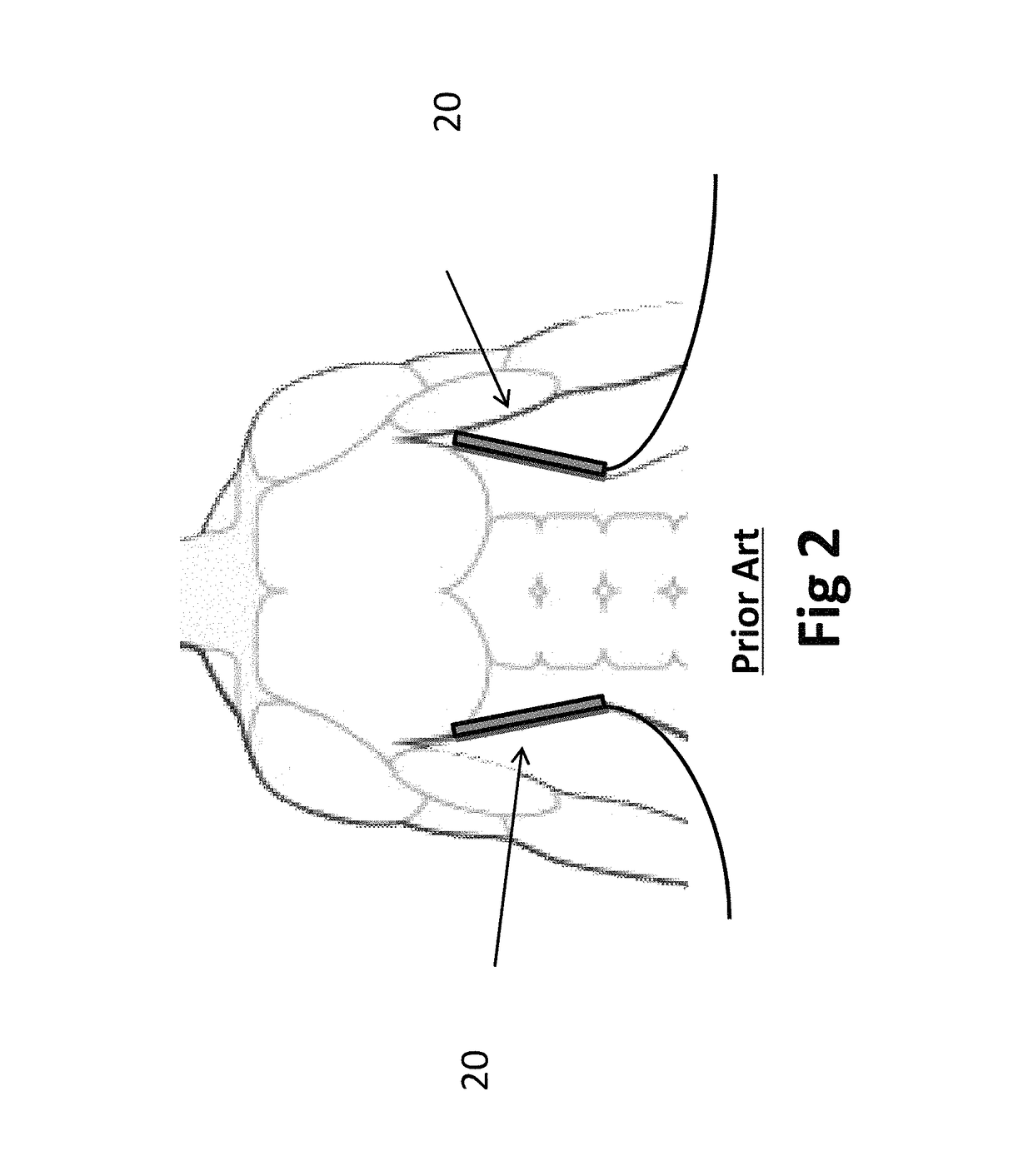Apparatus and method for treating multiple tumors in patients with metastatic disease by electric fields
a tumor and electric field technology, applied in the field of tumor and cancer cell treatment, can solve the problems of tingling on the patient's skin, single small insulated electrodes cannot meet these requirements, and the small elements used individually cannot draw the required energy
- Summary
- Abstract
- Description
- Claims
- Application Information
AI Technical Summary
Benefits of technology
Problems solved by technology
Method used
Image
Examples
second embodiment
[0070]Now, additionally referring to FIG. 10, there is shown the present invention, an insulated electrode array 70 formed by sub-arrays 70A (front) and 70B (back). In this embodiment the communication wire is not used or is removed from the multilayer flex circuit 54 and each element 52 now includes a communication interface 72 with the integrated circuit 60. A signal is sent down the A and B lead wires of the multilayer flex circuit 54 at a different frequency than the TTF to direct the desired commands to each element 52. Also, the field generator 58 includes a command generator 74 for signaling the integrated circuit 60.
third embodiment
[0071]Referring now to FIG. 11, there is shown the present invention, an insulated electrode array 80 being formed by sub-arrays 80A (front) and 80B (back). In this embodiment, each individual element 52 includes a flexible wireless antenna 82 and a wireless communication interface 84 that enables the receiving of commands from a wireless signal generator 86 within the TTF field generator 58.
[0072]Referring now to FIG. 12, there is shown a fourth embodiment in the form of an insulated electrode array 90, a front sub-array 90A and a back sub-array 90B. In this embodiment, each integrated circuit 60 and relay pair 62A, 62B corresponding to a thin array element 92 is positioned in the same case 94 as the TTF generator 96. Thereby, the TTF generator 96 has a built-in dynamic reassignment. All the wires from the field generator 96 are run through the multilayer flex circuit 54, or any other suitable carrier, to each thin array element 92. Each thin array element 92 has its own power and ...
fifth embodiment
[0073]Referring now to FIG. 13, there is shown a fifth embodiment in the form of an insulated electrode array 100, pairing a front sub-array 100A and a back sub-array 100B. In this particular embodiment, the integrated circuit 60 is replaced by a small microprocessor 102. This embodiment allows pre-programmed firing states (array configurations and firing sequences) to be preloaded on each array element 52. This allows for broadcast communication to all array elements 52 simultaneously for faster switching. Each firing state is given a single or double digit ID. This firing ID code (or state ID) is appropriately broadcast to all array elements 52 at once. One message is sent to accomplish the firing state verses potentially hundreds using an integrated circuit alone.
PUM
 Login to View More
Login to View More Abstract
Description
Claims
Application Information
 Login to View More
Login to View More - R&D
- Intellectual Property
- Life Sciences
- Materials
- Tech Scout
- Unparalleled Data Quality
- Higher Quality Content
- 60% Fewer Hallucinations
Browse by: Latest US Patents, China's latest patents, Technical Efficacy Thesaurus, Application Domain, Technology Topic, Popular Technical Reports.
© 2025 PatSnap. All rights reserved.Legal|Privacy policy|Modern Slavery Act Transparency Statement|Sitemap|About US| Contact US: help@patsnap.com



